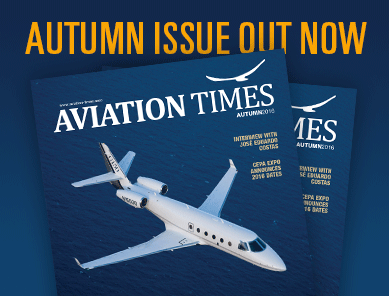An overview of Business Aviation in Central and Eastern Europe from Colibri´s perspective
 In recent years, as the economic slowdown has hit business aviation travel in Western Europe and the United States, one area that has posted positive growth is Central and Eastern Europe. This area
In recent years, as the economic slowdown has hit business aviation travel in Western Europe and the United States, one area that has posted positive growth is Central and Eastern Europe. This area
was overlooked for a long time but is now seen as having a great deal of potential as a key growth area. Seen as a relative late comer to the business aviation sector the region, is currently developing at a much faster pace than older, more established markets.
Compared to other parts of the world there are a high proportion of the business aircraft in Central Europe in the large cabin sector. Current estimates of fleet sizes are as follows; 149 large cabin aircraft, 144 mid-size aircraft, and 169 small cabin aircraft, a total of 462 aircraft located throughout Central and Eastern Europe. More than 50% of these aircraft are based in Austria
as many Russian owned aircraft are registered there.
One of the primary factors for the tendency towards large cabin aircraft is because the commercial economies of the region are relatively new and the shift to business aviation is a recent development. This means that, initially, it is only the larger, more established enterprises that move into business aviation and are the first to purchase business aircraft. In most instances they tend to purchase larger aircraft with greater cabin capacities. Other factor are the distances involved and the need for long range aircraft in developing markets, which one again means that the choice of aircraft is often larger jets. The situation in Central Europe is mirrored in another developing market, China, where 75% of business aircraft fleet consists of large cabin, long
range business aircraft.
Another factor that is very typical of these new markets is the age of aircraft. It is quite natural that new buyers purchase new aircraft, the situation in Central Europe is that most aircraft date from 2006 onwards.
As the business aviation market continues to grow in Central Europe so does the level of aircraft sales, as an example from January to June 2014 there were 78 aircraft sold in the region. If this is compared with the 22 aircraft sold during the same period in 2004 it illustrates a 350% increase in aircraft sales, quite a step up in just 10 years. As the market gains momentum and Central European enterprises and companies continue to grow it follows that the number of high net worth individuals will increase, potentially leading to even more aircraft sales.
Another way that more enterprises and individuals can enter the Central European business aviation sector is to look at the option of buying older aircraft. The thorough maintenance procedures
for all aircraft ensure that older aircraft can be just as efficient and reliable as new aircraft, and with a cabin refit can be transformed to meet the buyers’ specific requirements. A key advantage of older aircraft is that they represent extremely good value for money and the lower pricing can lower the price barrier for new entrants in to the market. Operating costs and efficiencies can compare quite favourably with newer aircraft, while the price of an older aircraft can deliver a considerable saving.
As the number of start-up aircraft operators in Central Europe continues to grow the more established operators such as ABS Jets in the Czech Republic and Blue Jet in Poland maintain their status
by expanding their fleets and services. ABS Jets has a policy of increasing its fleet of aircraft annually and has grown to become a leading international operator not only in Central Europe but to wider markets across the globe.
It should not be forgotten that as the number of aircraft and operators increases this creates a growing demand for service providers (management companies, operators, maintenance facilities, brokers). This creates a better infrastructure and network through Central Europe which in turn helps the market grow further. This in turn creates a need for finance from banks as the demand for capital grows incrementally.
The future looks promising for business aviation in Central and Eastern Europe but there is the ever present threat that as the market demand grows this will be met by operators and owners from
other regions. The very nature of aviation means that increased demand can quickly be met by operators from outside the region. So while the future looks bright for central and Eastern Europe it is critical that aircraft operators and owners move quickly to meet demand before the window of opportunity closes.
Share the post "An overview of Business Aviation in Central and Eastern Europe from Colibri´s perspective"
Publishing or copying the content of AVIATION Times without a written electronic permission is strictly forbidden. If you have any information, tips, videos, photos or your press releases for us contact us at news@aviation-times.aero.
AVIATION TIMES © Copyright 2012 - 2025







